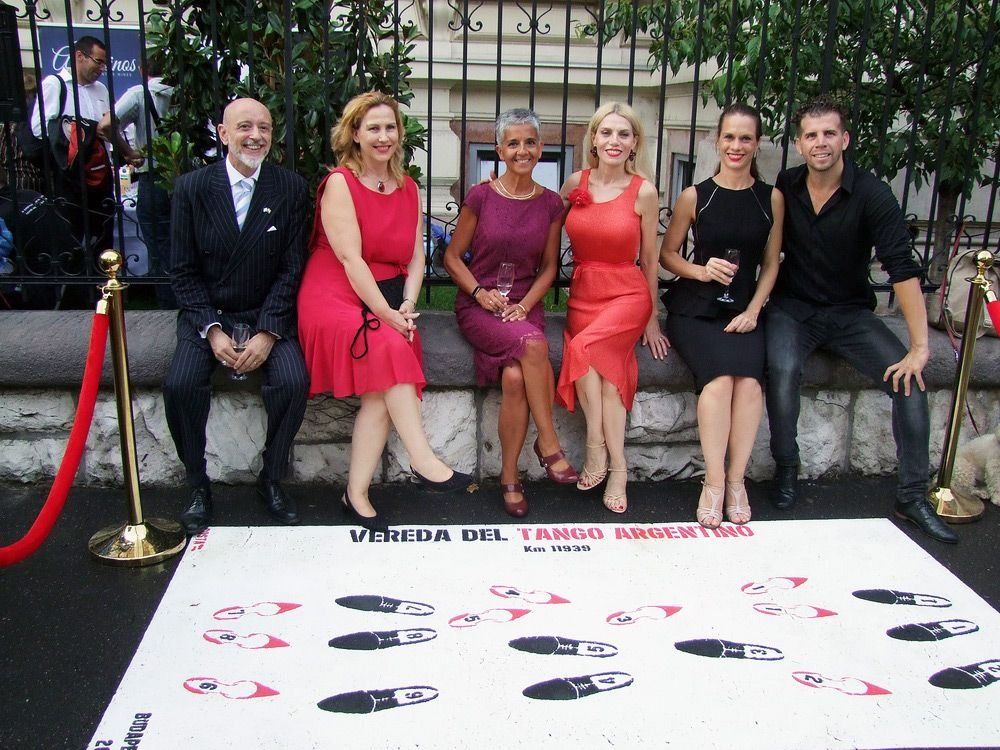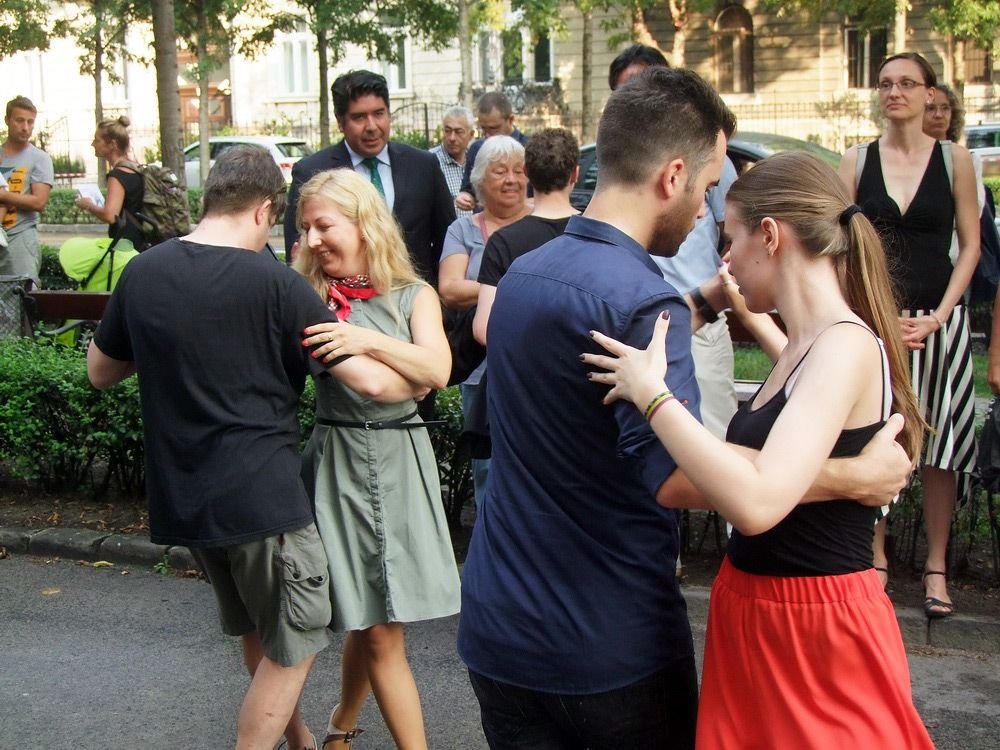
28 August 2019 – 09.08 AM
The most fun in public without getting arrested
Photos by George Konkoly-Thege
Tango is included in the UNESCO Intangible Cultural Heritage Lists of neighbouring South American countries Argentina and Uruguay. This is the explanation for the mysterious footprints that appeared on the pavement outside the Argentine Ambassador’s Residence at 96 Andrássy út. The idea is that the pedestrians practise the eight basic steps of the dance right there on the spot, as it could be seen at the inauguration of the artwork on August 26, 2019.

These «Veredas del Tango» or «Sidewalks of Tango» are to be found in various districts of the Argentine capital city Buenos Aires and have become a symbol of the «City of Tango». The most famous Vereda, identified with «Km 0» is found at Avenida Callao 1078. The creation of Bettina Costa, the Budapest’s own «Vereda del Tango» is exactly 11939 kilometres away and thus has been designated with «Km 11939».
I was born in Argentina, the cradle of tango, however I never paid much attention to this part of my culture. I considered tango as something «for old people». I never thought I’d ever be interested in tango until I emigrated.
Costa explains: «At the beginning of the 20th century, Argentina was full of immigrants seeking their fortune and hoping to return to Europe or bring their families across the ocean. The tango lyrics reflect the deep feeling of loss of these immigrants and the nostalgia for the people and places they left behind. Tango helped them to forget their worries.»
I am also an immigrant; I came to Switzerland for a quite different reason. I was never homesick but perhaps unconsciously I was looking for something not to lose my roots. With tango, I found it.
The past few years she has dealt intensively with the subject tango. Besides painting, she began to work with collages and stencils, the latter influenced by street art. In 2016 she decided to implement the tango variations much more conceptually and went for the first time away from the walls with the project «Vereda del Tango».
The first «Vereda del Tango» outside Argentina is in Rheinfelden, Switzerland, exactly 11255 kilometres away from the «Vereda del Tango – Km 0» in Buenos Aires.
Then followed carpet installations: shoe-shapes cut on carpet and arranged showing the tango steps, placed on the floor or on a wall. During the Art Basel week 2017 she presented the project «Cancha de Tango»: a rectangular rolling-grass area on the gravel showing the tango steps. The steps were marked with whiting spray like in any playing field or «cancha» (Spanish for playing field).
During the Art Market Budapest she presented the installation «Tangország»: tango steps cut on carpet and applied half on the wall, half on the floor. Additionally there was an unofficial «Vereda del Tango» outside which invited the visitors to the fair to try some tango steps.
But don’t worry people of Budapest: the artwork at 96 Andrássy út is painted on the pavement and is slip-resistant.





bettina.costa@coaster.ch
www.art.coaster.ch

